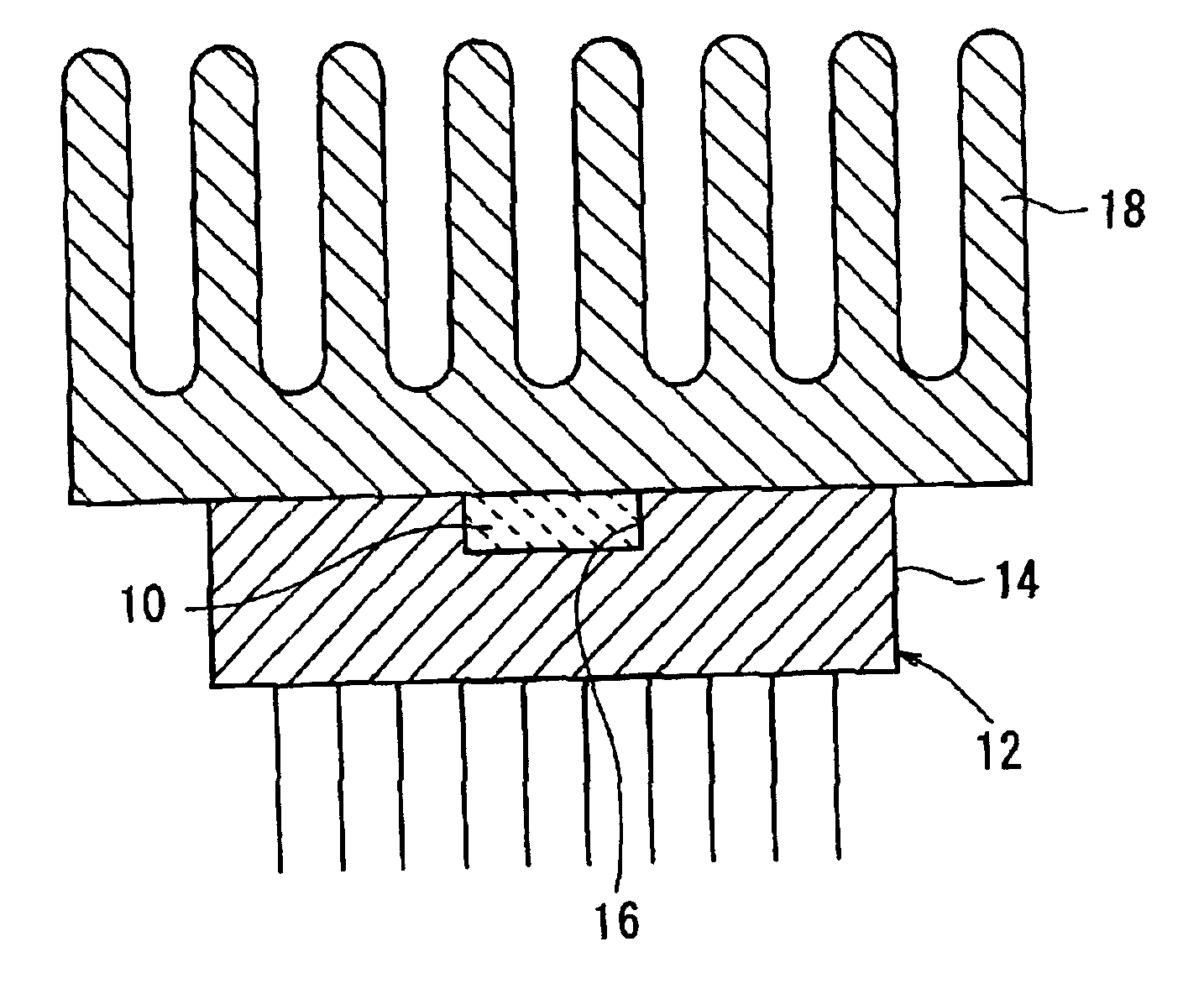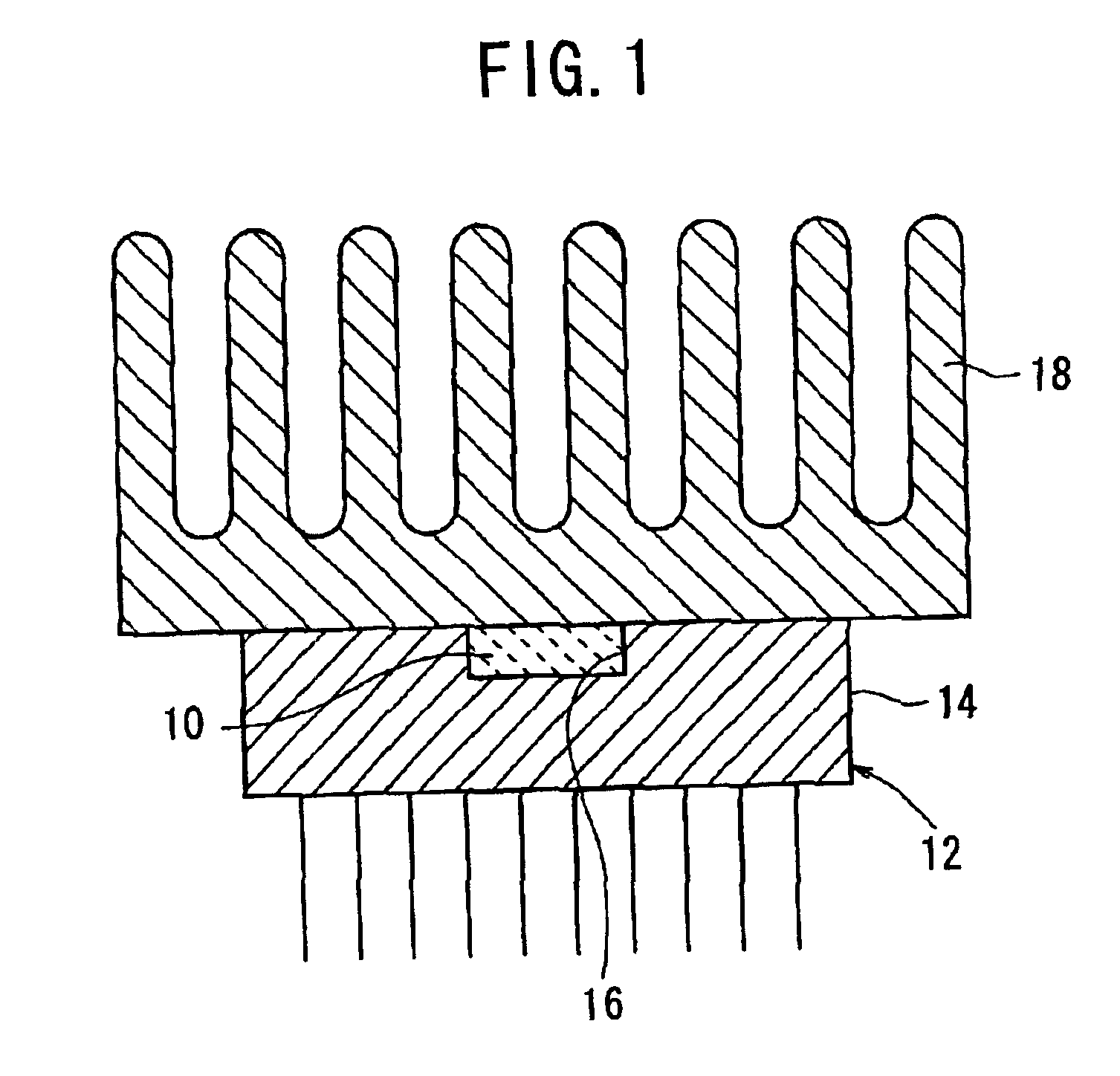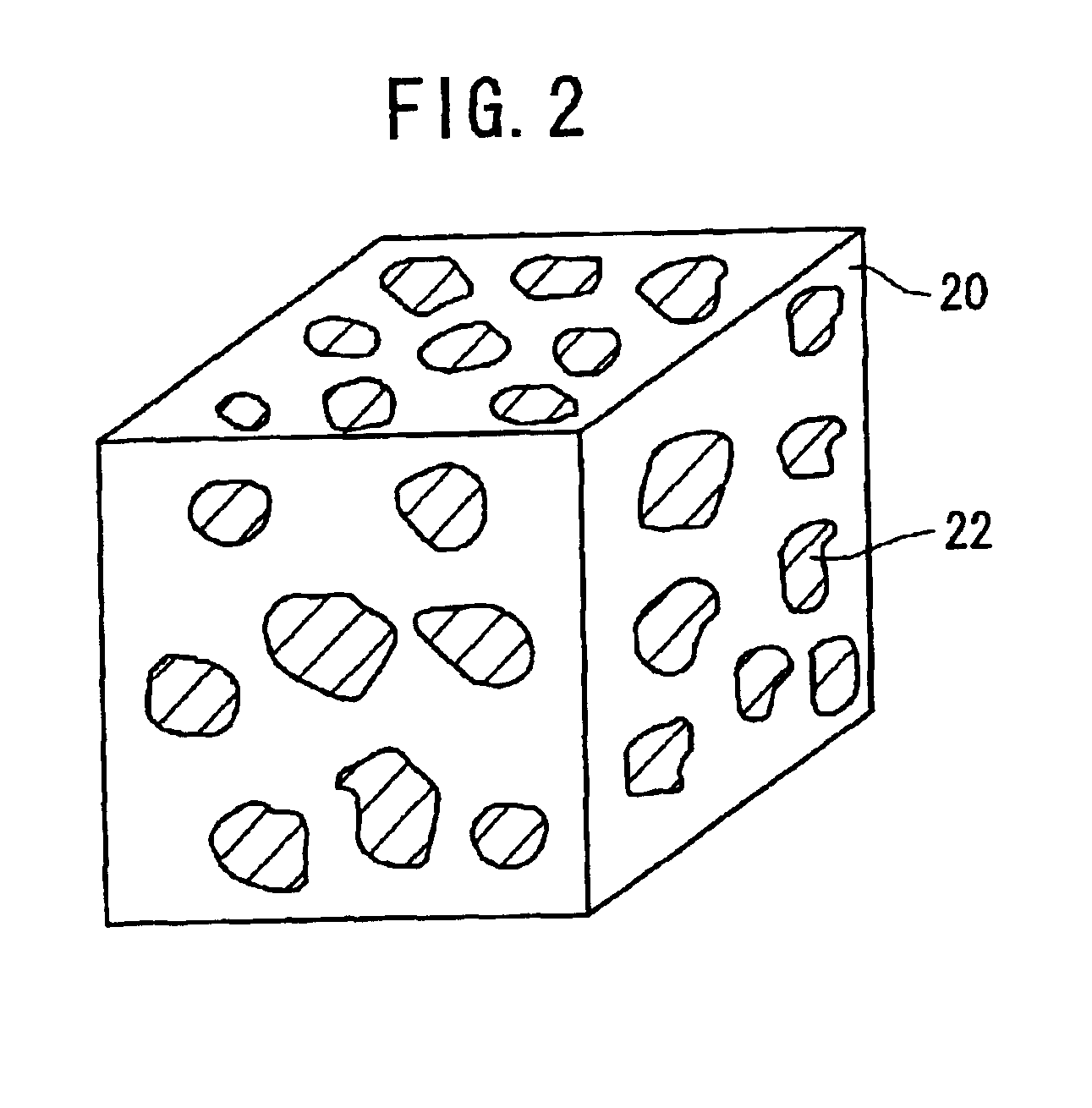Composite material
a technology of composite materials and materials, applied in the field of composite materials, can solve the problems of increasing the temperature of those semiconductor devices, the ineffectiveness of the semiconductor device to sufficiently radiate heat generated, and the large amount of electric power consumed by power transistors and semiconductor rectifiers per operating area, so as to prevent interfacial reaction, promote oxide film generation, and avoid the coefficient of thermal conductivity of the porous ceramic sintered body
- Summary
- Abstract
- Description
- Claims
- Application Information
AI Technical Summary
Benefits of technology
Problems solved by technology
Method used
Image
Examples
first embodiment
[0077]As shown in FIG. 1, a heat sink 10 made of a composite material according to the present invention is embedded in an opening 16 defined in an upper surface of a package 14 of a semiconductor device 12 and has a surface held in contact with cooling fins 18 fixed to the upper surface of the package 14.
[0078]Heat radiated from a semiconductor element (chip) mounted in the semiconductor device 12 is efficiently transferred through the heat sink 10 to the cooling fins 18.
[0079]The composite material according to the first embodiment of the present invention comprises a porous ceramic sintered body produced by preliminarily sintering a porous body having a coefficient of thermal expansion lower than the coefficient of thermal expansion of copper to construct a network therein, the porous ceramic sintered body being impregnated with a copper alloy. Specifically, as shown in FIG. 2, a porous ceramic sintered body 20 of SiC has open pores impregnated with a copper alloy 22. The porous ...
second embodiment
[0141]A method of manufacturing a composite material according to the present invention will be described below with reference to FIGS. 10 to 15.
[0142]The method of manufacturing the composite material according to the second embodiment employs a hot press furnace 60 shown in FIG. 10. The hot press furnace 60 comprises a tubular housing 62 accommodating therein a lower punch 64 serving as a base, an upwardly open refractory casing 66 fixedly mounted on the lower punch 64, an upper punch 68 movable into and out of the refractory casing 66 through its upper opening, and a heater 70 for heating the refractory casing 66. The hot press furnace 60 has a suction pipe 72 for evacuating the housing 62.
[0143]The refractory casing 66 is of a tubular shape with a space 74 defined therein. The upper punch 68 has a flange 76 on its side wall for determining the stroke thereof. A packing 78 is attached to the lower surface of the flange 76 for contacting the upper end surface of the refractory cas...
third embodiment
[0167]A method of manufacturing a composite material according to the present invention will be described below with reference to FIGS. 16 and 17. Those parts in FIG. 16 which are identical to those shown in FIG. 10 are denoted by identical reference characters, and will not be described in detail below.
[0168]The method of manufacturing the composite material according to the third embodiment is essentially the same in principle as the method of manufacturing the composite material according to the second embodiment, but differs therefrom in that in the impregnating process, the SiC 20 and the copper alloy 22 are brought into contact with each other under a negative pressure or normal pressure, and then heated to melt the copper alloy 22.
[0169]Specifically, as shown in FIG. 16, the filter 54 is not charged, but bodies of the SiC 20 and masses of the copper alloy 22, which are arranged successively upwardly in the order named, are charged into the refractory casing 66 of the hot pres...
PUM
| Property | Measurement | Unit |
|---|---|---|
| Temperature | aaaaa | aaaaa |
| Temperature | aaaaa | aaaaa |
| Fraction | aaaaa | aaaaa |
Abstract
Description
Claims
Application Information
 Login to View More
Login to View More - R&D Engineer
- R&D Manager
- IP Professional
- Industry Leading Data Capabilities
- Powerful AI technology
- Patent DNA Extraction
Browse by: Latest US Patents, China's latest patents, Technical Efficacy Thesaurus, Application Domain, Technology Topic, Popular Technical Reports.
© 2024 PatSnap. All rights reserved.Legal|Privacy policy|Modern Slavery Act Transparency Statement|Sitemap|About US| Contact US: help@patsnap.com










